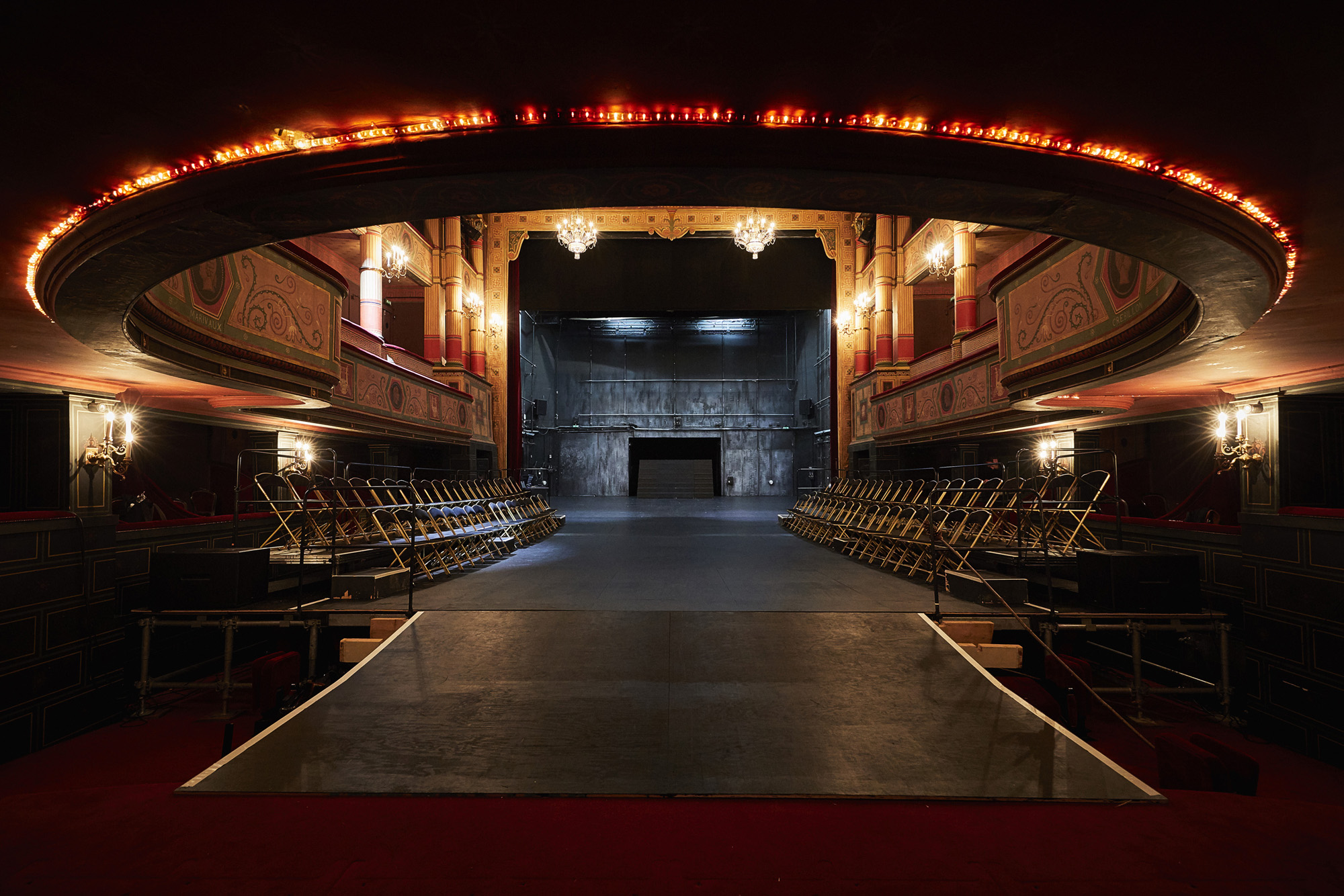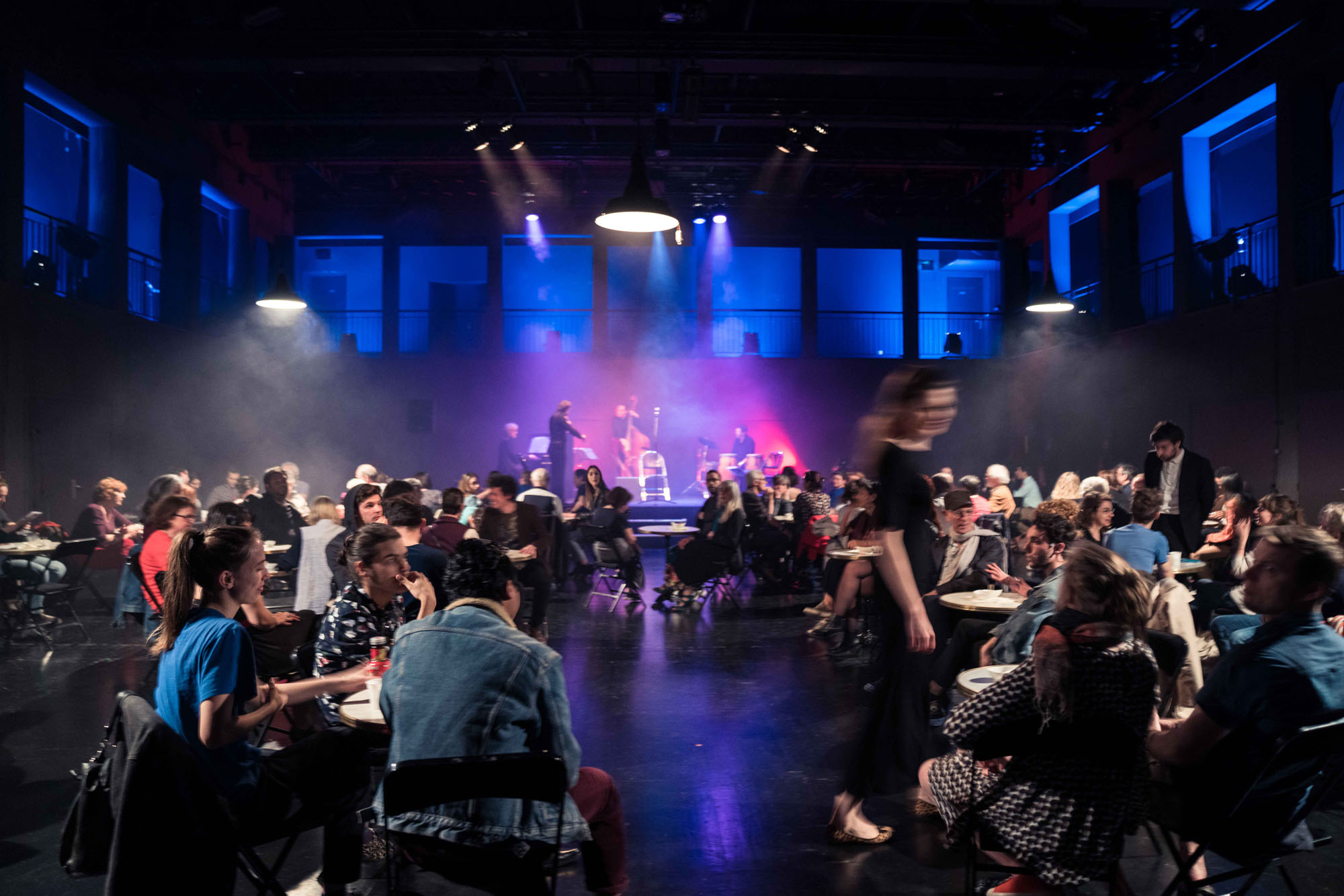THE COMPANY
Interpréludes
“Be as multiple as the universe.”
“Be as multiple as the universe.”
“Be as multiple as the universe.”
Since its inception in 2015, Interpréludes has distinguished itself through its multidisciplinary and multilingual choral creations and performances, as well as its commitment to seeking out different ways of looking at the actor-audience dynamic.
We use the tools of music to explore theater, and vice versa. Our plays highlight the possibilities and the mechanics of music on stage, in terms of theater making and text interpretation, and in the construction of the performance.
At the same time, we are trying to constantly reinvent the relationship between stage and audience and between the performers and spectators themselves. Rather than a mere ‘’space used for representation’’, we consider these relationships as a fertile ground from which the dramaturgy itself can emerge.
We adhere completely to Bernard Dort’s hypothesis that theater “is a signing polyphony open to the audience.” This polyphony is no doubt made up of sounds but also of words, gestures, lights, colors, tensions, impulses, passions, and questions that interweave and blend together in the performance space.
The human Voice gives a particular quality to this tension. The blend of timbres, colors, harmonies, textures and sound densities create and set in motion new spaces of perception and reception. This network echoes with the multiple personal “dramas” created by the artists and audience members.

Areas
of reflection

“Listening to the music opens up a direct path, a visual solution, whether a character’s action, or a means of resolving a psychological dilemma, something he would hide from us, or simply a movement in space. Without reducing music to psychology; I can say that music immediately gives me several possibilities to stage an action, to make a thought visible, to incarnate it and to transform it into a precise occupation of space.” – Patrice Chéreau
In our work, we try to be site-specific. It is a dramaturgical element in its own right, and the project must be open to it. The space is the co-creator of the drama. The site will transform the work in progress in the same way that the work will transform the site. Each project must find its space.
Within and with this space the choral aspect of our work can resonate. We also bear in mind the story we want to tell – how could it be otherwise? – but our “dramaturgical state of mind” is first and foremost driven by a sound or a rhythm rather than being just about the “story”: the framework of these creations is above all musical.
One space cannot accommodate every type of drama. If we consider drama to be a network of transmitters meeting in the space-time of a performance – a space in which the audience is by definition present, then the picture of man and his world hypothesized by theater itself – at least the theater we believe in – must also reflect the boundaries (of lack of) between this space-time and audience.

Paying close attention to the space we’re in allows us to explore another fundamental question of theater: the relationship between performers and audience.
This is an important axis through our work and each time we try rethink this relationship, coming up with new interactions between these two pillars of theater. We try to problematize this exchange, in order to “emancipate” not so much the audience, but the performers themselves. That is to say, we challenge the performers’ ability to listen, and their openness to the present moment, through direct and unpredictable contact with the audience.
It can be tempting to think that theatergoers are looking for something that we are able to give them. We are often focused on questions such as: “What effect do we want to produce on the audience?” , or “How to capture the audience’s attention?” , or “How can the spectator be shaken from his (alleged) passivity?”, whereas we rarely ask ourselves “How is the spectator affecting me?” , “How does my performance change if, instead of trying to capture their attention, I focus on what is attracting me to them?”
Without losing sight of the distinctions necessary for theater to exist, we have tried to complexify the boundaries, making them more porous and creating a place of curiosity and unpredictability for the actor that is similar to that of the spectator. We attempt to weave a space within the theatrical fabric, where the performer is less certain of his status, less sure of his position. He is alert and vulnerable and can approach the other with a sense of renewed wonder.

Transforming an idea into reality, a dream into action, a poetic intuition into a creative force that is shared with an ever-growing community. Within this process and the stimulating journey between concept and experience, abstraction and production, text and stage, meaning is found. A myriad of possibilities for learning about the world and about each other.
Art remains a force that can “disorganize” life, disobey rules & customs with creativity – and transform life without constraining it. It suggests instead a novel translation of the world. At once carnivalesque, multifaceted and “cacosymphonic”, art remains – despite fetishism, opportunism and mercantilism – the best way to rebuild and share ideas and sensibilities.
It is through the musical journey that it will be possible to reconcile and gather a plethora of voices that can offer a counterpoint to the “norm”. Thinking about theater as choral is not only an awareness of audience as a community or a lot of actors on stage in order to reflect diversity. It is also a means of considering theater as a network of signs, a dynamic web of “subjectivities in action”, where each line must be heard independently as well as being part of the harmony that transcends it.
Searching for symphony within the cacophony!
